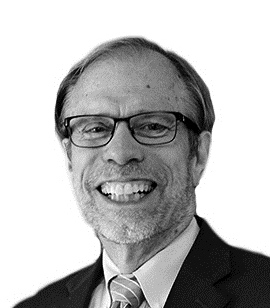After a surprise derailment by the Vatican of a long-awaited vote of the U.S. bishops, tempers were frayed.
"I feel frustrated," said one powerful cardinal.
An influential archbishop added, "The thinking came a little late. ... It makes it a little awkward for us."
If you think this is a report on the recent meeting of U.S. bishops and the surprising news that the Vatican had nixed a vote on controversial proposals to hold bishops accountable for sins of omission and commission regarding sex abuse, you would be wrong.
The cardinal quoted was John J. O’Connor of New York. The archbishop quoted was Thomas C. Kelly of Louisville, Kentucky. And the event that provoked their reactions took place in 1988.
To quote the Los Angeles Times’ report at the time, "An unexpected Vatican directive received by American Roman Catholic bishops just hours before they opened their annual meeting here Monday forced them to put off approving guidelines to resolve disagreements between themselves and theologians."
It turns out that when it comes to Vatican-U.S. relations, if history doesn’t repeat itself, it sure as heck rhymes.
Thirty years ago, tensions between the Vatican and the U.S. hierarchy had reached a boiling point. Rome reportedly was upset with what they saw as aggressive and divisive actions by U.S. bishops: The famed war and peace pastoral that in early drafts had appeared to condemn even the holding of nuclear weapons. Worries about a draft pastoral on women. And the proposed document to resolve disagreements between bishops and theologians — sparked in part by Humanae Vitae — that Rome thought treated the two groups as having equal authority.
The U.S. bishops were themselves chafing at Rome’s actions: An investigation of Seattle Archbishop Raymond G. Hunthausen. Frustration with a draft Vatican document on bishops’ conferences. Criticism of their pastoral letters. And the appointment of bishops seen as more traditional and supportive of Pope John Paul II’s vision for the Church.
Flash forward 30 years and the roles have switched. Pope Francis and his advisers are seen by some as the meddling progressives while others see the U.S. bishops as too rigid and ideological. Rome may question the loyalty of the Americans, while U.S. eyebrows are being raised at some episcopal appointments boosting those deemed supporters of Pope Francis.
The roles may be reversed, but the lack of understanding remains the same. Today, the U.S. bishops are frustrated that while their homegrown critics ignore all the strides that have been made in protecting children since 2002, their Vatican critics do not understand the enormous pressure they are under from the media, lawyers, wealthy donors and Catholics in the pews.
Rome feels the bishops are caving too quickly to pressure and worries that precedents are being set and canonical changes being proposed that may harm the Church elsewhere.
As in 1988, it may be that neither Rome nor the United States is understanding each other very well, despite all the talk about listening and accompaniment.
How this plays out is anyone’s guess. A bishops’ retreat in January may allow the Holy Spirit to get a word in edgewise. A meeting of the presidents of the world’s bishops’ conferences in February is already burdened both with exaggerated expectations and predictions of failure.
But if history does repeat itself, we might do well to remember that in spring 1989, Pope John Paul II summoned all the U.S. metropolitan archbishops to Rome. There they held a four-day closed-door meeting that by all accounts cleared the air and led to a gradual easing of tensions.
The crises of the past may hold lessons for our leaders today.
Erlandson, director and editor-in-chief of Catholic News Service, can be reached at [email protected].










